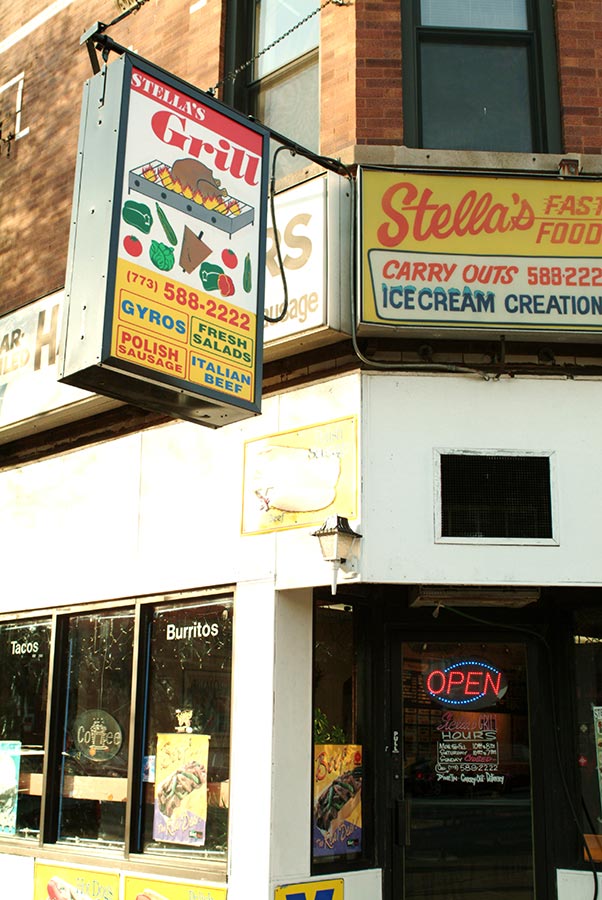Welcome to North Center
North Center is a neighborhood on the rise with a well-kept residential area, a pleasant nightlife and an amiable antique shopping strip. From riverfront property on the west end to grand Victorian houses with wrap-around porches in the east, this Chicago neighborhood provides homebuyers with a wealth of desirable real estate options and more importantly, a place to call home. North Center is a nice balance of residential blocks and business sections. The restaurants are one-of-a-kind, putting a fantastic spin on the typical neighborhood cafes and family diners. Art and antique dealers join in with original works and creative furniture and home decor ideas. A local theater venue and a slew of cozy bars complete the package, making North Center a fine locale for everything you'd want in a Chicago neighborhood.
North Center consists of: St Ben's.-
Looking to Buy? Search North Center listings
-
Interested in Selling? Request a Listing Presentation
-
Want More Information? Sign up for our Trends Report
For Sale in North Center
-

4132 N CLAREMONT Avenue
$2,300,000
- 4 beds
- 5.1 baths
- North Center
- Detached Single
-

2235 W Oakdale Avenue 2-D
$1,200,000
- 4 beds
- 3.1 baths
- North Center
- Attached Single
-

4305 N Wolcott Avenue
$2,000,000
- 6 beds
- 5.1 baths
- North Center
- Detached Single
-

2235 W Oakdale Avenue 17-B
$1,900,000
- 4 beds
- 3.1 baths
- North Center
- Attached Single
-

2235 W Oakdale Avenue 13-E
$1,250,000
- 4 beds
- 3.1 baths
- North Center
- Attached Single
-

2235 W Oakdale Avenue 10-C
$1,405,400
- 4 beds
- 3.1 baths
- North Center
- Attached Single
-

2235 W Oakdale Avenue 7-D
$1,180,000
- 4 beds
- 3.1 baths
- North Center
- Attached Single
-

2235 W Oakdale Avenue 12-D
$1,275,000
- 4 beds
- 3.1 baths
- North Center
- Attached Single
-

2235 W Oakdale Avenue 8-D
$1,160,000
- 4 beds
- 3.1 baths
- North Center
- Attached Single
-

2235 W Oakdale Avenue 11-D
$1,300,000
- 4 beds
- 3.1 baths
- North Center
- Attached Single
-

2235 W Oakdale Avenue 9-C
$1,300,000
- 4 beds
- 3.1 baths
- North Center
- Attached Single
-

3446 N Oakley Avenue
$2,250,000
- 6 beds
- 5.1 baths
- Roscoe Village
- Detached Single
-

3342 N Ravenswood Avenue
$1,950,000
- 5 beds
- 3.2 baths
- Roscoe Village
- Detached Single
-

3336 N Oakley Avenue
$3,500,000
- 8 beds
- 5.2 baths
- Roscoe Village
- Detached Single
-

2235 W Oakdale Avenue 3-D
$1,200,000
- 4 beds
- 3.1 baths
- North Center
- Attached Single
-

2529 W Hutchinson Street
$650,000
- 4 beds
- 2 baths
- North Center
- Two to Four Units
-

1839 W HENDERSON Street
$1,350,000
- 7 beds
- 4 baths
- Roscoe Village
- Two to Four Units
-

3443 N Oakley Avenue
$850,000
- 6 beds
- 3 baths
- Roscoe Village
- Two to Four Units
-

2118 W Melrose Street
$1,750,000
- 6 beds
- 3.1 baths
- Roscoe Village
- Detached Single
-

2226 W Barry Avenue
$1,695,000
- 4 beds
- 3.1 baths
- North Center
- Detached Single

Want more detailed information on North Center?
Get a Trends Report delivered to your inbox monthly
Send Me North Center Trends











